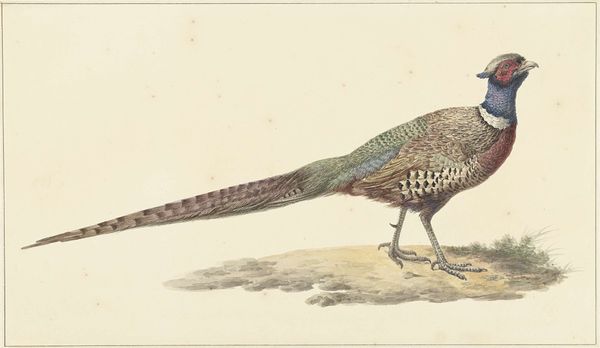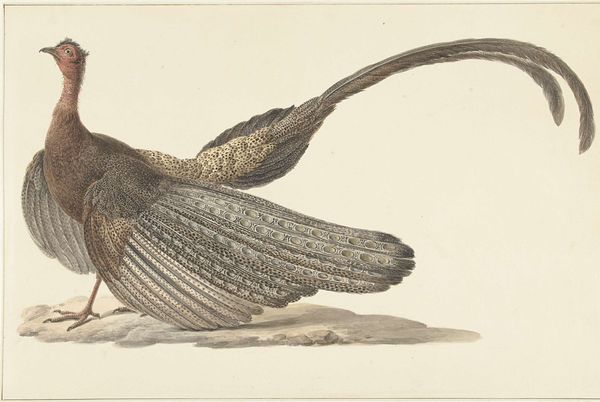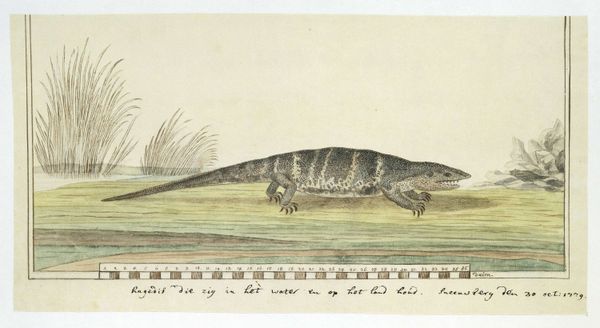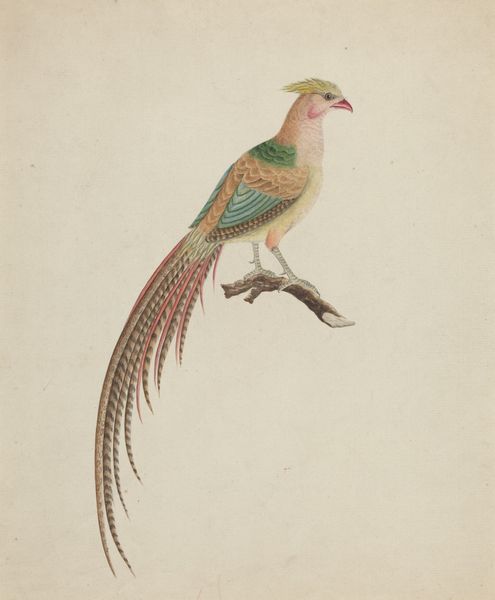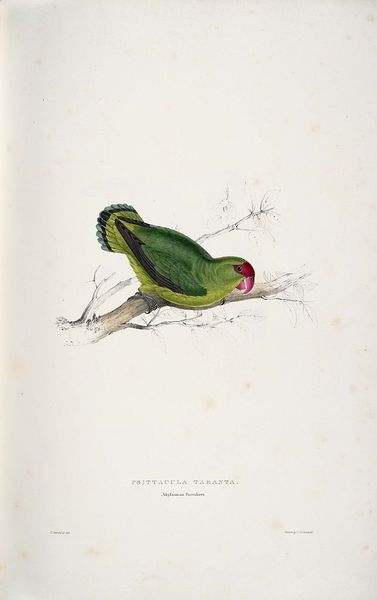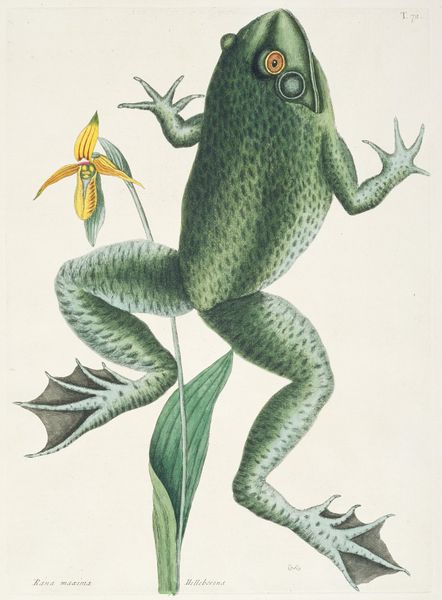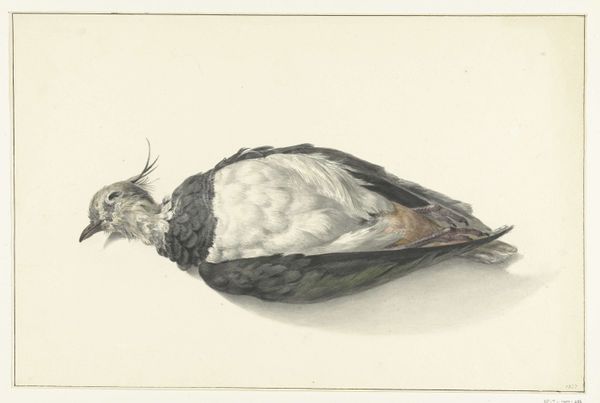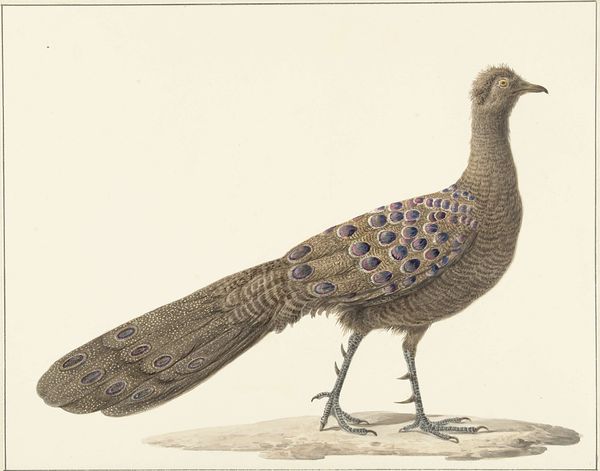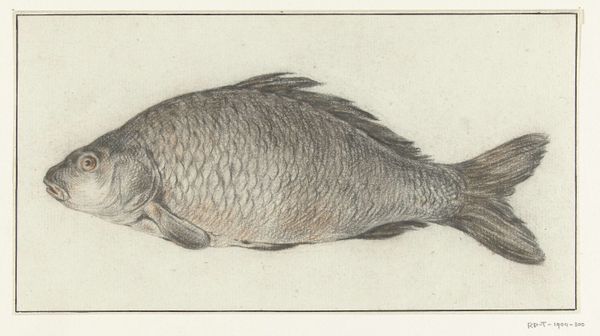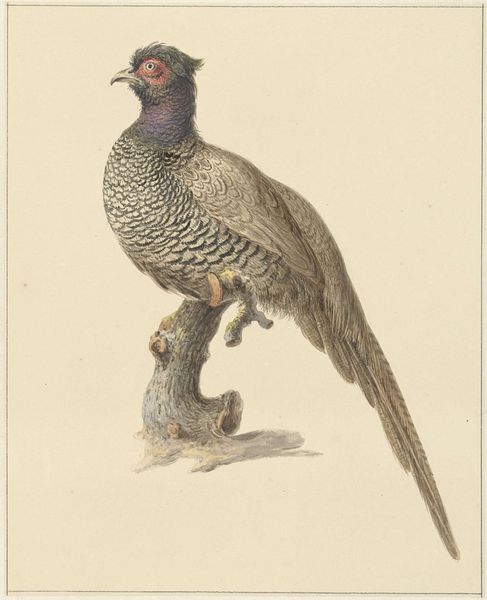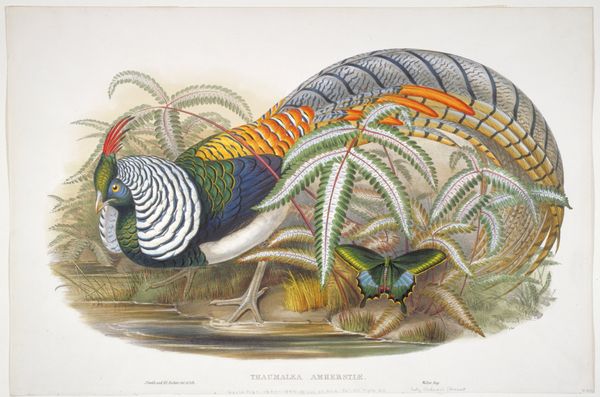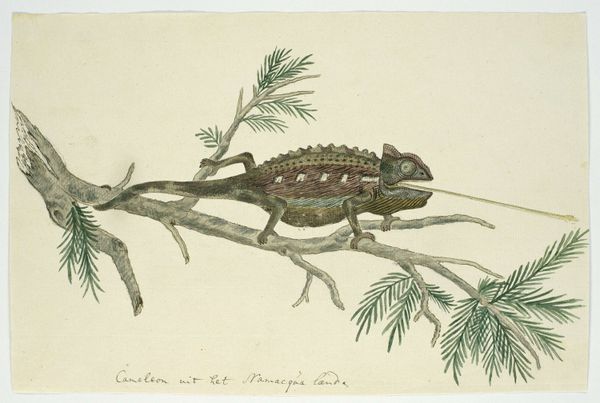
drawing, watercolor
#
vegetal
#
naturalistic theme
#
drawing
#
landscape
#
botanical illustration
#
figuration
#
watercolor
#
green background
#
botanical photography
#
romanticism
#
botanical drawing
#
watercolour illustration
#
naturalism
#
botanical art
#
watercolor
#
warm toned green
Dimensions: height 348 mm, width 531 mm
Copyright: Rijks Museum: Open Domain
Curator: Alright, so we're looking at a watercolor drawing entitled "Blauwe Pauw," which translates to "Blue Peacock," made sometime between 1759 and 1842, by Pieter Pietersz. Barbiers. Editor: Ah, it's wonderfully serene! The kind of image that whispers rather than shouts. A touch melancholy, perhaps, with its faded greens and that ever-so-slightly drooping tail. Curator: The drawing presents the peacock in profile against a softly toned green backdrop. Barbiers clearly focuses on meticulous detail—look at the rendering of each individual feather, down to the iridescent "eyes" in the tail. Editor: Yes, the composition directs the eye from the bird's crested head, along the sweeping curve of that magnificent tail. The execution feels very precise and disciplined, although I am more seduced by a little artifice. This naturalistic depiction is skilled and sensitive, yet it’s a study, almost scientific. Curator: Exactly! The period places it firmly within the Dutch tradition of naturalism, and this would’ve served not just aesthetic, but documentary purposes. This artwork reflects the period's fascination with cataloging and understanding the natural world through art. Editor: Fascinating. I almost wish it revealed a bit more about the peacock’s presence, it seems very staged if you will. And although lovely in technique, my desire for expressiveness exceeds its technical merit, and it makes it appear distant to me. What do you think? Curator: I appreciate its restraint! I'd also say the subtlety invites a longer look. What appears as scientific precision at first unveils layers of subtle color and light if you will commit your eye to it. The emotional tone, it's contemplative and calm, making us aware of the beauty found in stillness. Editor: Fair enough! Each sees what they need to see. Its meticulous execution may draw a kind of calmness—the antidote to an erratic soul like mine, perhaps. Curator: Maybe Barbiers’s intention was a meditative experience… I now admire how effectively a simple subject inspires introspection.
Comments
No comments
Be the first to comment and join the conversation on the ultimate creative platform.
